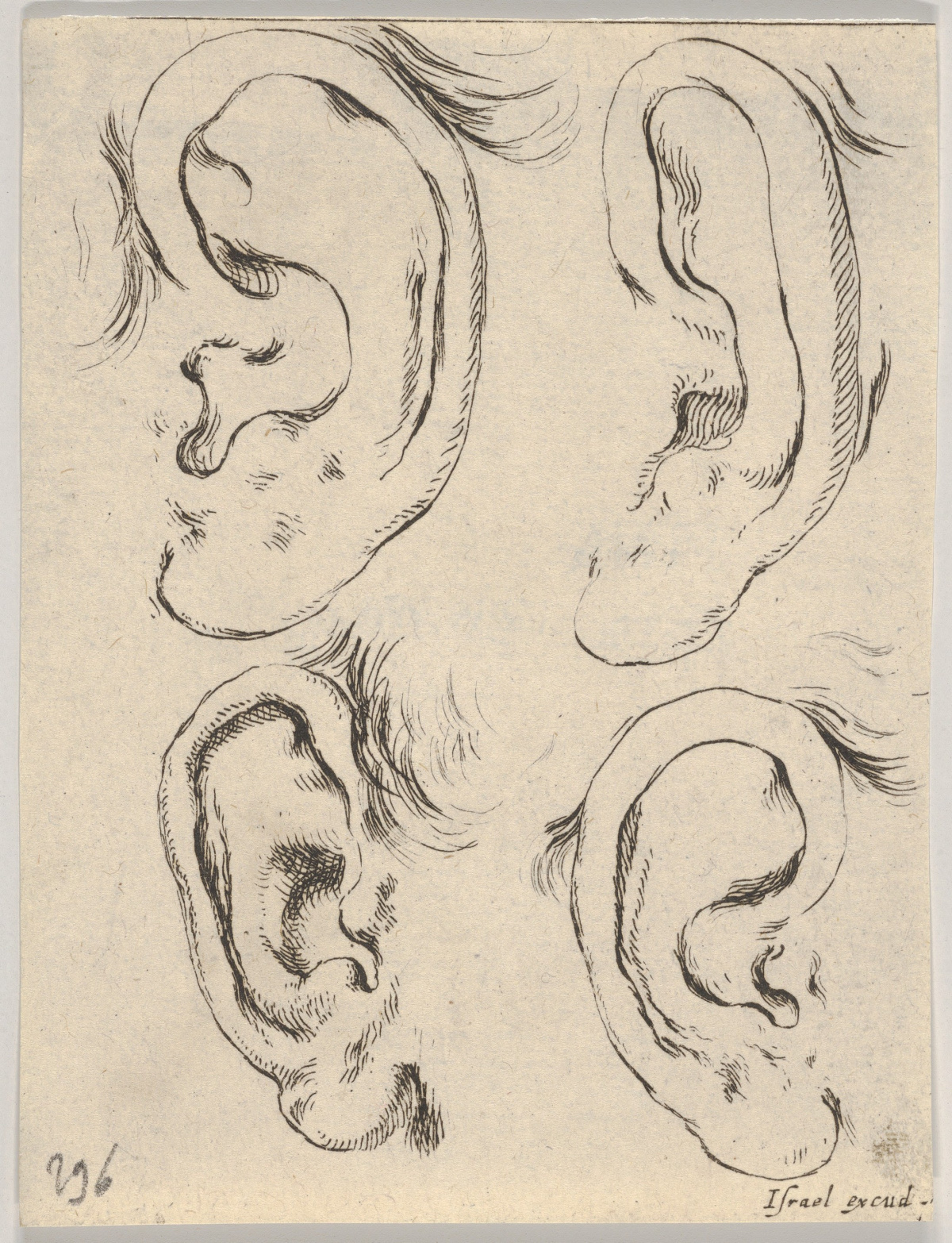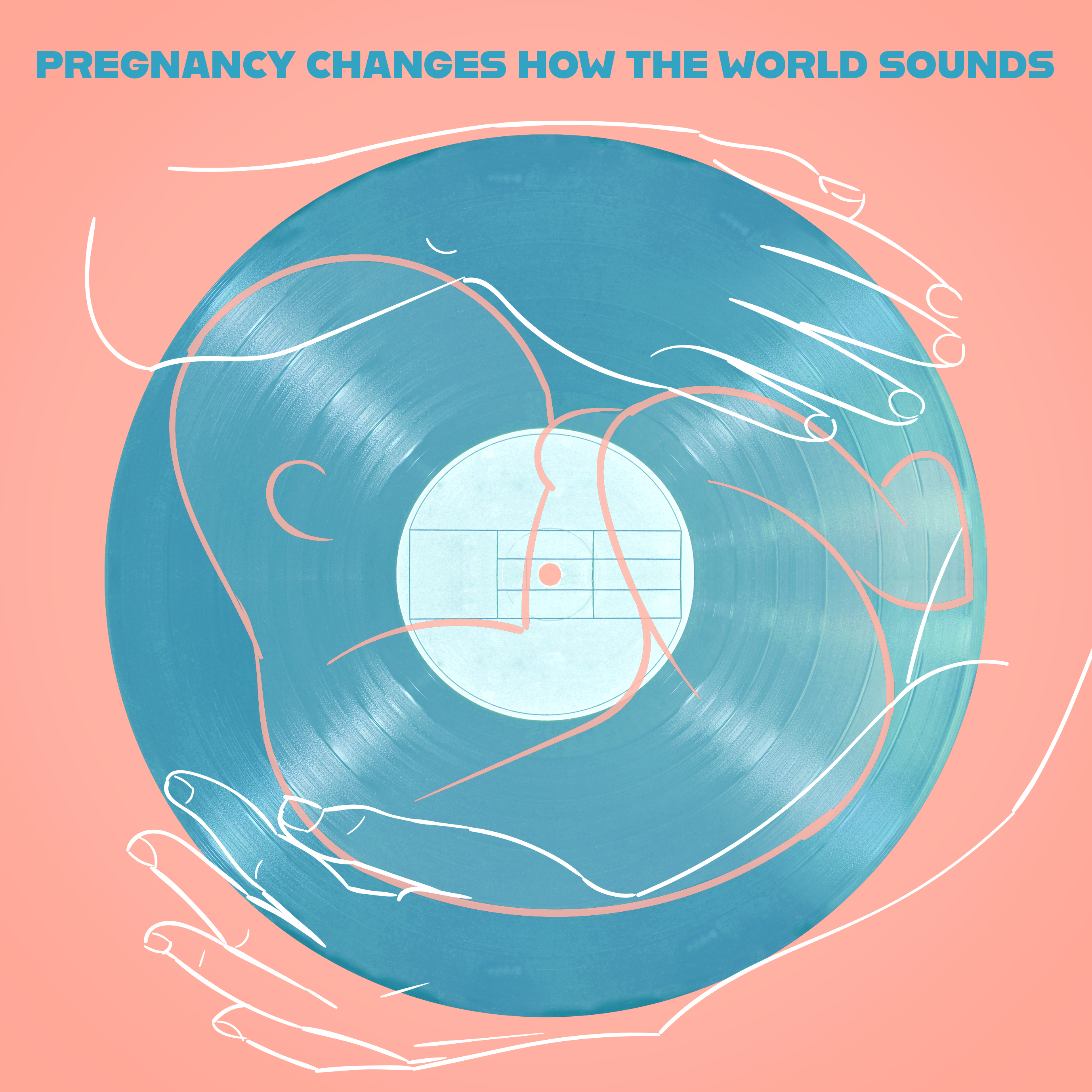
Listening with Four Ears
One day, when pregnant, our author listened to a song and began to cry unintentionally. In what ways, she asks herself in a new episode of the Sonic Worlding column, are the romanticization of music and pregnancy connected?
Content note: this piece discusses pregnancy and mentions pregnancy loss.
In April 2022, I found myself crying while walking into the city. I was in the second trimester of a pregnancy: an experience that was fraught with anxiety, difficult bodily transformations, gender policing, and hope. Listening to a song I had heard hundreds of times before – Aretha Franklin’s rendition of «I Say a Little Prayer» – triggered an unexpected outpouring of affect. I’m mindful that the figuration of a pregnant person crying for no reason is an unpleasant stereotype, underpinned by the devaluation of feminized displays of feeling. Nonetheless, during this time, music sounded – and felt – different. «I Say a Little Prayer» came closer and landed more intimately than before, causing tension in my chest and my eyes to prickle. Where I had previously been resistant to emoting through music, the ebb and swell of Franklin’s voice, intensified by the instrumentalists and backing singer, allowed me to let go of an ambiguous something.
It isn’t surprising that Franklin’s song sounded different to me, given that pregnancy can literally change your senses. Some experience a heightened sense of smell or taste, while others may develop hearing loss or tinnitus. It is not an overstatement, then, to say that pregnancy changes how the world feels and sounds, transforming our preferences and perceptions.
Although music writing has frequently referenced sounds’ purportedly womb-like qualities,1 there has been limited attention paid to pregnant listeners themselves. Yet, music has often been promoted as a tool of affective modulation during pregnancy. Drawing on common tropes about music’s soothing capacity and its status as a cheap cultural resource, pregnant people are told that music can relieve stress, or help them bond with their (future) child. It has even been suggested as a means of pain relief during labor. As a result, a significant subsection of the pregnancy consumer market consists of curated playlists, CDs, and music players.
Contradictory Sentiments
Both music and pregnancy have been subject to intense romanticization, sometimes concealing their proximity to negative feelings and ambivalent affects. In the case of the former, the oft-celebrated joy and pleasure of music is frequently found in articulations of heartbreak. As a technology of emotion, music draws out catharsis from suffering. Take «I Say a Little Prayer» written by Burt Bacharach and Hal David and recorded by Dionne Warwick as well as Franklin during the time of the Vietnam War, it is a song of love and devotion. And yet, the euphoric chorus ends on a contrasting note of vulnerability: «to live without you / will only mean heartbreak for me». As popular music has so often made clear to the point of cliché, love carries with it the threat of loss.
Pregnancy, too, can involve complex and contradictory sentiments. Scans and check-ups are a reminder that the making of new life comes with the risk of loss. This might be the loss of a fetus or embryo, or it may involve the loss of the pregnant person: be it the loss of life that can occur due to infections, blood clots, or high blood pressure, or the loss of self that can occur when you are treated as secondary to the contents of your abdomen.
While I am resistant to trying to «explain away» this listening encounter, it’s likely my own feelings of vulnerability meant that I experienced Franklin’s song more intensely than before. Rather than simply soothing away stress or exerting a calming influence, «I Say a Little Prayer» amplified. In so doing, it transformed my anxiety and ambivalence, illuminating how the messy relations between musical listening, sensation, and bodily and biochemical states can result in an undoing of the familiar: a hearing anew.
- 1. Examples of this include Simon Reynold’s Energy Flash: A Journey Through Rave Music and Dance Culture (2008), David Toop’s Sinister Resonance (2011), and R Murray Schafer’s The Soundscape: The Tuning of the World and Our Sonic Environment (1994).
«Sonic Worlding» is a monthly Norient column. It invites writers and artists from all over the world to to think and speculate with and not only about music. Where most music writing treats music as something that can be categorised and placed in pre-determined boxes (personality cults, end-of-year lists, genres, origins, styles), «Sonic Worlding» is interested in the vast potential of rhythms, ideas, and worlds that are still to be unlocked, attempting to spin new webs of thought spanning the globe. Edited & curated by Norient editor Philipp Rhensius.
Biography
Published on November 21, 2023
Last updated on April 09, 2024
Topic
A generative practice that promotes different knowledge. One that listens is never at a distance but always in the middle of the sound heard.
Special
Snap




